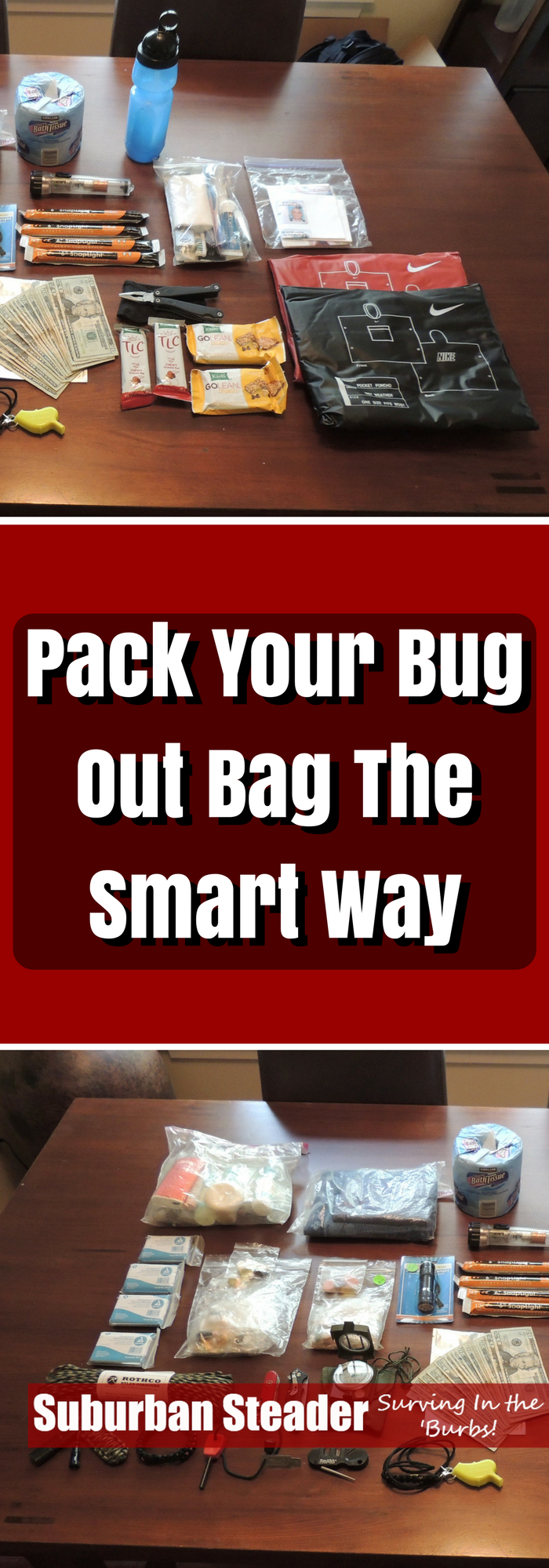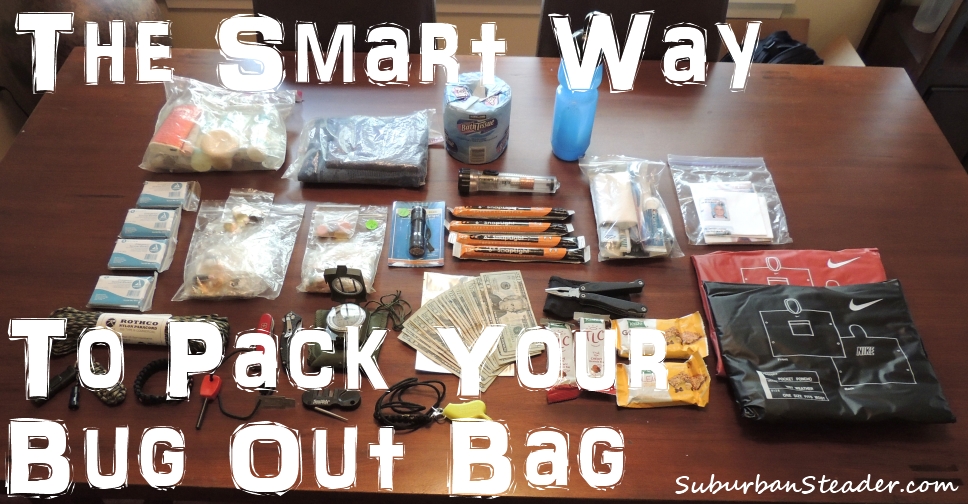Pack Your Bug Out Bag The Smart Way
As a well-informed prepper, you’ve no doubt put a significant amount of thought and effort into choosing the best, most essential items to include in your bug out bag. Did you know that the way you pack your bug out bag is just as important as the items themselves? It’s true. Even the most well-prepared kit can lose its life-saving ability if the items you need aren’t reachable at the exact moment you need them.
I will teach you the proper way to pack your bug out bag to ensure that you maximize the benefits of your survival preparedness in this article.
Choosing The Right Bag For Your Needs
All packs are NOT created equal. What works for someone else may not necessarily work for you. Choosing the right bag for you and your particular situation can mean the difference between life and death. Don’t choose a bag simply because you already have it or it’s on sale. Selecting a bag that will be an asset and not a hindrance requires as much thought as deciding on the items you will keep in your bag. The more time you invest beforehand in picking your bag, the better off you’ll be when the time comes to use it.
Your number one concern for your pack is mobility. If you can’t move with it, what’s the point? The most important considerations for mobility are comfort, weight, and accessibility in my mind.
Comfort
It’s more than likely that you will find yourself walking great distances for days on end in a bug out situation unless your survival plan involves hunkering down in one spot. This is why the comfort and fit of your bag are so important. If the bag you’ve chosen makes walking for more than a couple of miles at a time impossible or has other aspects that cause you discomfort (such as straps that can dig into your shoulders after a period of time), then chances are this isn’t the right bag for you.
Different bags fit each person differently. This is why experimentation is an essential part of your preparedness process. Take a day and try out a couple of bags. Can you walk comfortably for several hours when they’re fully packed?
Weight
While comfort is the first consideration I look for, even the most comfortable bag in the world can’t help you if it’s impossible to lift. If you find that the bug out bag you’ve packed is too heavy for you, consider paring down your items to only those that are most essential. If that doesn’t work, choose a bag with better support that can help bear some of the weight (here is an article with tips on reducing your bag’s weight).
Accessibility
This last consideration is often overlooked by many preppers despite the fact that it can have life-or-death consequences. You may have packed all the items you need for survival, but if you can’t reach them in time, your careful planning won’t be of any use to you. Look for packs that have different compartments and provide easy access to items you will need access to within a moment’s notice. Selecting a bag with various compartments and storage capabilities will also make organizing your bug out bag much easier.
Essential Items to Pack In Your Bag
There are a myriad of lists available online that provide suggestions on the essential items to pack in your bug out bag. However, the best person to determine the necessary items to pack is you.
If you’re not sure if the items you’ve decided to pack are the essential ones you’ll need for bugging out, the best way to find out is to try them! Take a weekend and test out your bug out bag under non-disaster conditions. This testing will not only help to determine which items are essential and which ones you are missing, but also allows you to evaluate your equipment and become more proficient with its use.
The items in your bug out bag should generally fall into the following categories (listed in order of importance):
The items you choose for each of these categories depend entirely on your personal situation and geographic location. Keep in mind that the greatest tool to add to any bug out bag is knowledge. The more you know, the more useful your pack will be in an emergency situation.
Pack Your Bug Out Bag The Smart Way
There is a right way and a wrong way to pack your bug out bag. Knowing the distinction can mean the difference between life and death. When packing your bug out bag, mobility is key. Utility is a close second. The organization of your pack cannot be haphazard and has to be approached with the same methodical process as planning for your bug out kit.
A properly packed bag is not only easier to carry, but can also fit more gear. You generally want to keep heavier items further down in your bag and close to your spine and vice versa for lighter items.
Once you’ve established that your gear won’t hinder your mobility, the next step is to properly organize your items to maximize utility. Start by evaluating and sorting your items based on the following three criteria:
- Non-urgent – items that won’t be retrieved with a sense of urgency such as extra clothing, bedding, and miscellaneous supplies
- Urgent – items that you will need to access frequently such as shelter, water, and food
- Emergency – items that will need to access within a moment’s notice such as self-defense gear, communication tools, and flashlights
To ensure maximum utility, pack your non-urgent items first (in the bottom or least-accessible part of your bag) followed by your urgent items. Emergency items are always packed last and be retrievable almost instantly.
Conclusion
You’ve chosen the best bag for your mobility and comfort needs, gathered the most essential items for your bug out bag, and packed them properly according to urgency of use. You’re all set, right? Wrong.
Your bug out bag and its contents should always be foremost in your mind when it comes to preparedness. A properly packed bag requires constant evaluation and revisions based on your lifestyle and location. Are the medications you packed expired? Are you equipped with items to support the new baby you just had? Are the clothes you packed appropriate for the season you’re in? These are just some of the questions you should ask yourself as you review your bug out bag. I recommend doing this review every three to four months.
Pro Tip: Set a reminder to do this in your phone right now before you have a chance to forget.
Don’t let packing become an afterthought when it comes to survival preparedness. Put the same effort and analysis into packing your kit as you did into planning it. Remember, there’s no time left to plan after disaster strikes and chance favors the well-prepared.

